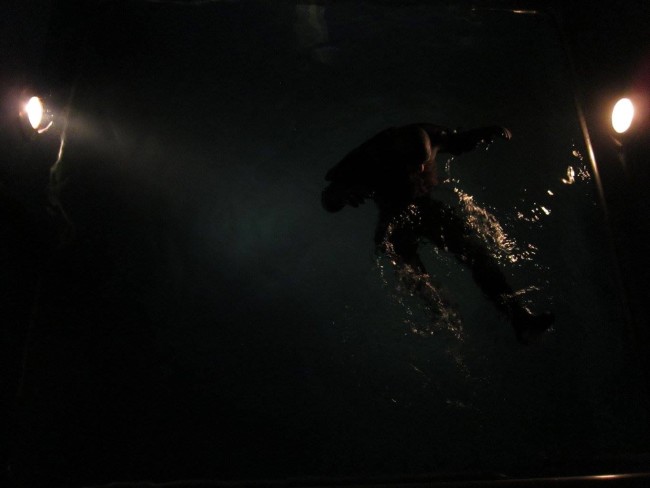NOWs: The Antarctic Pavilion

First Antarctic Biennale during the 57th Venice Biennale of Art 2017
Palazzo Molin a San Basegio
Fondamenta Zattere Al Ponte Longo 1412, Venice, Italy
Selected artworks created in Antarctica, along with photo and video documentation of the voyage, will debut at The Antarctic Pavilion during the 57th Venice Biennale of Art 2017. This group exhibition will include works by the expedition’s participants and projects from the finalists of the Antarctic Biennale Open Call for young artists.
In March 2017 an international group of artists, scientists, architects and philosophers left the port of Ushuaia (Tierra del Fuego, Argentina) bound for the Antarctic Circle – onboard the scientific research vessel Akademik Sergei Vavilov. They would make landfall at numerous sites on the world’s southernmost continent throughout the next two weeks. At each location, artworks, exhibitions and performances were realized. Mobility, site-specificity and ecological compatibility were key touchstones. Nothing was left behind and no audience was present, except the participants themselves and – of course – Antarctica’s native species. Actions included a landscape photography exhibition for penguins (they didn’t seem to get much out of it) and an underwater installation for whales.
In addition to onshore interventions, throughout the expedition, the vessel itself served as a floating studio, exhibition, installation and performance space; a photo lab, and conference facility. Onboard activities included symposia, debates, and a daily screening program featuring commissioned videos by international artists. Throughout, the focus was on the question ‘What potential does the Antarctic Imaginary hold?’– for exiting polarized identity politics, and ecological insensitivity in public culture. Also, on dialogues leading to future cross-disciplinary collaborations. For the project’s Commissioner, Alexander Ponomarev and the Organizing Committee, the enterprise was ventured in the belief that this remote region must be made more proximate; that the last continent is a fertile site for new beginnings.
This year, The Antarctic Pavilion presents documentation of this 1st Antarctic Biennale – a paradigm-shifting phenomenon in biennale culture: A hot-house in a frozen realm, without mobile phones, internet, ready audience, or escape to another cocktail party, throughout this biennale everyone was in the same boat. While its expedition is complete, its collaborative outcomes are just beginning.
In addition to documentation of the 1st Antarctic Biennale, this year’s Antarctic Pavilion debuts a series of newly commissioned works exploring the aesthetic, conceptual and mythic paramaters of the Antarctic Imaginary.
In “Space Fish” (Raumfisch), Julius von Bismarck for instance realizes a site-specific performance by letting a tropical freshwater fish swim through the cold waters of the Antarctic Sea, facilitated by a custom swimsuit. The work’s thematic background revolves around human exploration. The swimsuit resembles a spacesuit, echoing man’s drive to explore and the romantic connotations of discovering new worlds. Referencing man’s first Antarctic expeditions, the fish reimagines the subject of the adventurer. The performance also emphasizes the role of tourism; travel for pleasure. It is also the theory and practice of touring, the business of attracting, accommodating, and entertaining tourists. Usually, the comfort of tourism is the preserve of humanity alone. In Space Fish, von Bismarck dives into the business of attracting the fish, offering a chance to experience the human luxury of movement to anywhere in world.
Abdullah Al Saadi (UAE). ‘Antarctic Alphabets’, Expedition Diaries
Alexander Ponomarev (Russia). ‘Alchemy of Antarctic Albedo (Or Washing Pale Moons)’. Underwater installations
Alexis Anastasiou (Brazil). ‘It ́s Cold out There’. Large scale projection
Andrey Kuzkin (Russia). ‘The Phenomenon of Nature or 99 Landscapes with a Tree’. Series of performances
Eulalia Valldosera (Spain). ‘Penelope’s voice: communicating with animals’. Audio intervention on the ship that travels to Antarctica
Gustav Dusing (Germany). ‘The solid state of matter’. Tent made of frozen cotton
Joaquin Fargas (Argentina). ‘Glaciator’. Robotic & Solar, mixed techniques
Julian Charrière (France/Switzerland). ‘Silence’, Performance
Juliana Cerqueira Leite (Brazil). ‘Vestibule’. Video Installation
Julius von Bismarck (Germany). ‘Space Fish (Raumfisch)’. Performance
Lou Sheppard (Canada). ‘Requiem for the Antarctic Coast’, Sound installation
Paul Rosero Contreras (Ecuador). ‘Arriba!’ site-specific intervention, film, photographs
Shama Rahman (Bangladesh/UK). ‘Truth be told’, Performance with sitar on ice
Sho Hasegawa (Japan). ‘Winter Landscape (Antarctica Version)’
Tomas Saraceno (Argentina/Germany). ‘Aerocene’ Performance
Yasuaki Igarashi (Japan). ‘Bundling Time’, Performance
Yto Barrada (Morocco). ‘Abstract Geology’
Zhang Enli (China). ‘Egg’